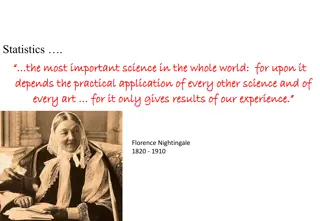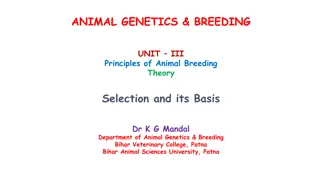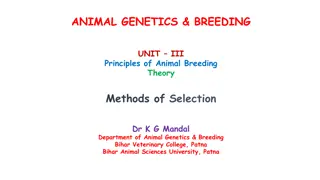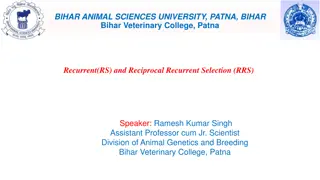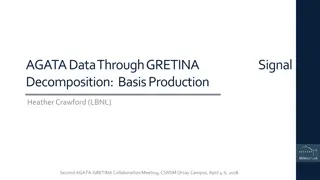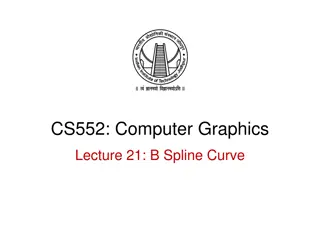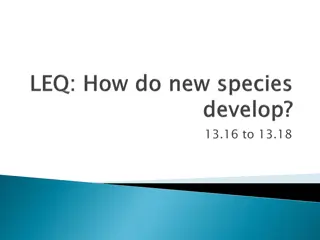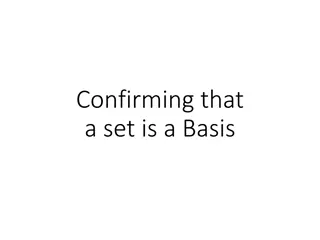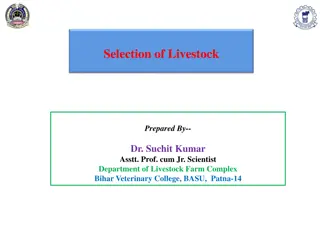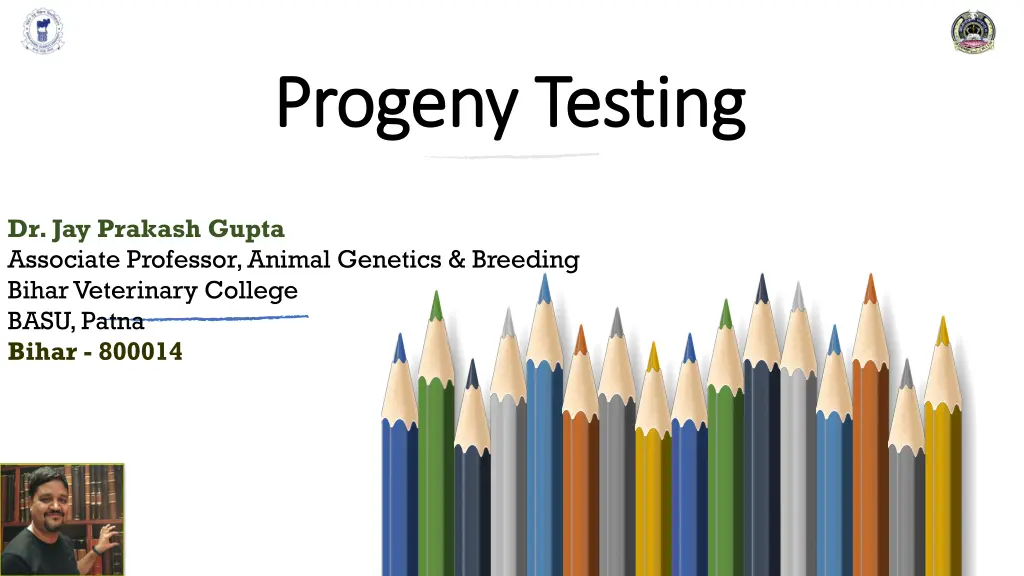
Genetic Selection Techniques in Animal Breeding
Explore progeny testing and combined selection methods in animal breeding, including criteria, advantages, and challenges. Learn about Osborne and Abplanalp Index for effective selection strategies.
Uploaded on | 2 Views
Download Presentation

Please find below an Image/Link to download the presentation.
The content on the website is provided AS IS for your information and personal use only. It may not be sold, licensed, or shared on other websites without obtaining consent from the author. If you encounter any issues during the download, it is possible that the publisher has removed the file from their server.
You are allowed to download the files provided on this website for personal or commercial use, subject to the condition that they are used lawfully. All files are the property of their respective owners.
The content on the website is provided AS IS for your information and personal use only. It may not be sold, licensed, or shared on other websites without obtaining consent from the author.
E N D
Presentation Transcript
Progeny Testing Progeny Testing Dr. Jay Prakash Gupta Associate Professor, Animal Genetics & Breeding Bihar Veterinary College BASU, Patna Bihar - 800014
Progeny testing Progeny testing The criteria of selection applied here is the mean value of an individual's progeny performance. The individuals are getting selection on the basis of mean The mean value of an individual's offspring comes as near as we can get to a direct measure of its breeding value Progeny testing is a modified form of family selection Demerits Long generation interval time consuming and expensive Overlapping of generations Sires can be selected only when progenies come for production and by the time sire may become old and useless.
Progeny testing Progeny testing 1. Herd/Farm Progeny Testing 2. Associated Herd Progeny Testing 3. Field Progeny Testing
Combined Selection The accuracy of selection for lowly heritable traits can be increased by paying attention to the phenotypes of close relatives in addition to the individual s own phenotype. Such a procedure of selection based on a combination of information from two or more sources is known as combined selection ( or index selection). In the species with high prolificacy, It is more useful to base selection on an index in which information from relatives is combined with the individual s own merit 4
Combined Selection 5 Osborne Index ( Osborne, 1957) is a combination of individual cum family selection. It is a combined selection in which parents are selected based on an index taking into consideration individual production and the sire and the damfamily average. The pullets and Cockerels with high score are selected and mated interse to produce the next generation avoiding full- and half-sib mating.
Combined Selection I = (P- P) + b2 (Fd P) + b3 (Fs P) 6 index for pullet selection I = b2 (Fd P) + b3 (Fs P) Where, P = Individual s production P = Flock average Fd = Dam family average Fs = Sire family average, and b2 and b3 are weighting factors whose values are available from readymade table for varying number of progenies under different dams and sires. index for cockerel selection Abplanalp Index (Abplanalp, 1974)
Basis of Selection 7 Individual selection tells us what an animal seems to be. pedigree is an indication of what an animal ought to be progeny tells what an animal actually is. Progeny testing means judging the genetic worth (breeding value) of an animal on the basis of performance of its progeny.
Basis of Selection Basis of Selection Maternal Paternal 2 Pedigree selection (P = Pf), Pw =0 Grand Sire Grand Dam Grand Sire Grand Dam Dam Sire Collateral relatives FS, HS etc. 3 Individual Selection (p = pf + pw) 1 Progeny testing (p = pf) 4
9 Thanks! Any questions? You can find me at: @JP_AAtrey jp.prakash01@gmail.com





